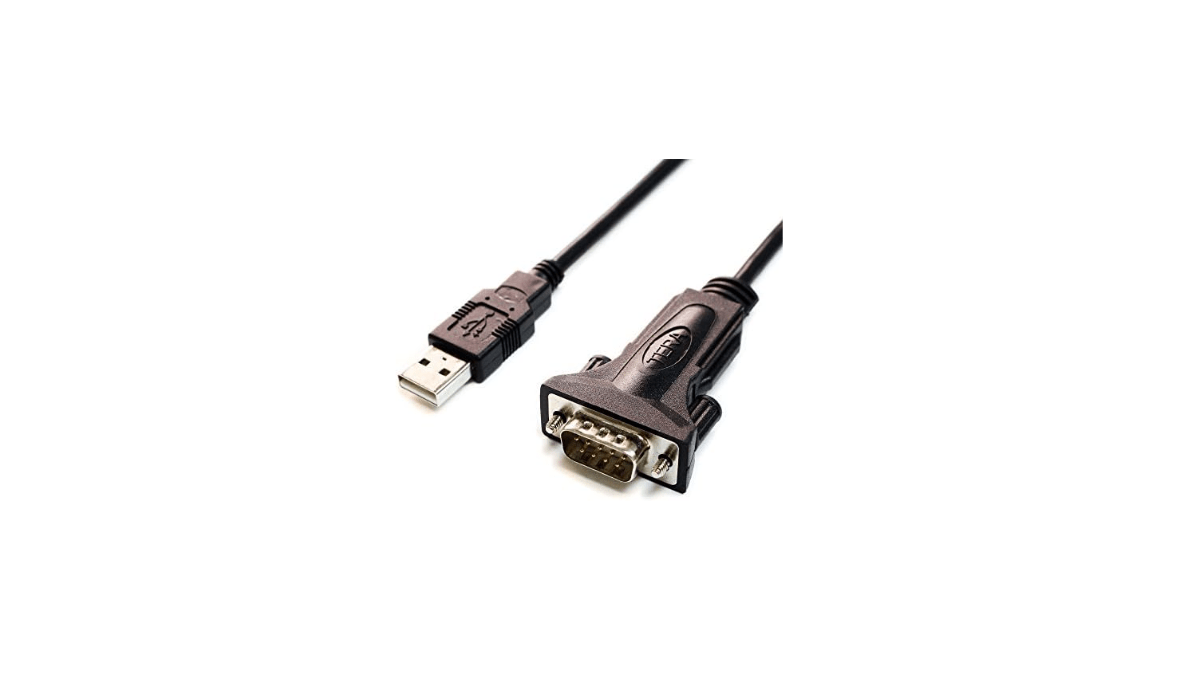A serial adapter is also known as a serial converter or serial interface converter. It is a hardware device that allows communication between different types of serial ports. Serial ports are used to transmit and receive data sequentially over a single data line. Making them suitable for transferring data between devices that are relatively close to each other. Serial adapter for PCs are often used to connect devices with different types of serial interfaces or protocols.
Top Serial Adapter for PC:
1. Tripp Lite Keyspan USB to Serial Adapter
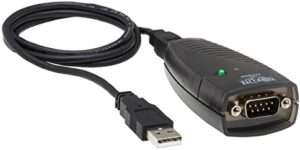
DB9 serial port is seen as a COM port by your computer and is available for use by any program that accesses COM ports. No need for an external power adapter. Draws power directly from your computer via the USB connection. DB9 serial port supports data transfer rates up to 230 Kbps twice the speed of a standard built-in serial port. The serial adapter allows a serial device to be connected to a USB computer. LED shows adapter status and data activity at a glance.
2. IOGEAR PDA/Serial Adapter for PC
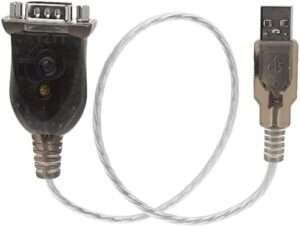
It will provide you with an external serial Plug-n-Play connection for use with computers, and notebooks. And handheld computing devices that support USB. The GUC232A works great with GPS devices allowing you to convert the serial interface, typically found on GPS units. High-quality serial connections at a data transfer rate of over 230Kbps. This eliminates the setup hassle found with traditional serial port connections. This device also supports energy-saving suspend and resume operations.
3. Tera Grand – Premium USB 2.0 to RS232
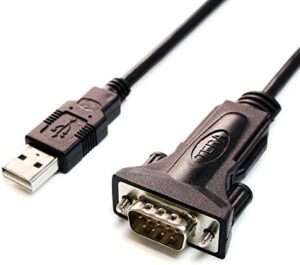
Supports Windows 11, 10, 8, 7, Vista, 2000, XP, 98, Apple MAC OS8 or higher, Linux 2.4.0, and later. If you are needing a USB-Serial cable with the proper FTDI Chipset for your Broadcastify stream tags or to program your police scanner on Windows 10 then you found your cable. Provides instant connectivity with modems, ISDN terminal adapter, PDA, bar code scanner, label printer, and devices with DB9 SERIAL ports. Cost-effective and does the job properly.
4. Plugable USB to Serial Adapter Compatible

Connect legacy DB-9 serial communications devices to a modern computer with USB. Add a 9-pin DB9 RS-232 serial port to any modern computer, replacing built-in or PCIe serial adapters. Recommended for use with a serial cable or NULL modem cable. Programmable baud rate from 75 bits per second to 128,000 bits per second.
Plug-and-play creation of a COM port. If you are using Windows in VMware Fusion, use the Windows driver installed in your Windows XP virtual machine. If you are using a regular PC install the Windows driver of course.
5. StarTech Pin Adapter

Another best brand StarTech connects 9-pin (DB9) or 25-pin (DB25) RS232 serial devices to your laptop or desktop computer through a USB port, as though the computer offered an onboard serial port. A 3-foot cable allows it to be connected directly from the serial device to the computer without requiring additional cables. This high-quality USB/RS232 Serial Adapter cable ships with a DB-9 to DB-25 adapter for connection to varied serial equipment
6. Legrand – C2G USB
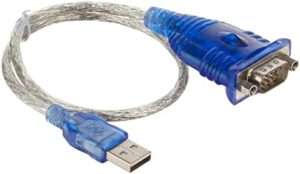
Quickly convert your DB25 serial device to USB to attach the devices to your PC. With this USB to the desktop adapter, complete with a 1.5-foot adapter cord. USB to DB9 serial adapter cord allows for high-speed serial data transfer up to 115.2 K. Making it ideal for your home or office. It is ideal for devices including digital cameras, modems, barcode readers, tablets, label writers, POS equipment, and more. This one-and-a-half foot USB to desktop adapter cord creates a virtual serial port.
7. SABRENT USB to RS-232 DB9
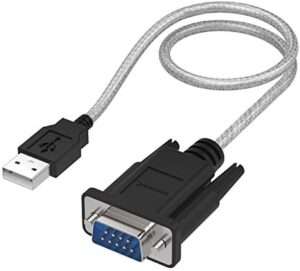
12-inch cable with standard USB Type A Male to standard 9-pin DB9 RS-232 serial connector. PL-2303 Chipset for widest possible compatibility with Windows, Mac, Linux, and other platforms. The cable length of this particular adapter is 1 foot (approximately 30 centimeters), which means it’s relatively short.
And suitable for applications where the connected serial device is close to the computer. The adapter has a DB9 (9-pin) connector on one end, which is the standard serial connector used in many devices like older modems, industrial equipment, and some legacy computer peripherals.
Does USB to serial adapters need drivers?
Yes, USB to serial adapters typically require drivers to function properly. These drivers are necessary because USB and serial (RS-232) interfaces operate differently, and the adapter acts as a bridge between the two.
When you connect a USB adapter to your computer, the operating system needs to recognize the adapter and understand how to communicate with it. The driver provides the necessary instructions to the operating system, enabling it to communicate with the adapter and use it as a virtual serial port.
Most modern operating systems, such as Windows, macOS, and Linux, include built-in drivers for common USB to serial chipsets like Prolific PL2303, FTDI, or CH340. When you plug in a USB to serial adapter that uses one of these chipsets, the operating system will often automatically install the appropriate driver or download it from Windows Update or other sources.
However, in some cases, you might need to install the driver manually. Especially if you are using a less common chipset or an older operating system. Manufacturers of USB to serial adapters usually provide the necessary drivers on their websites. You can download and install it to ensure compatibility and proper functionality.
How to install a Serial Adapter on a PC?
- Connect the Adapter: Plug the USB end of the adapter into an available USB port on your computer. Then, connect the other end (DB9 connector) of the adapter to the serial device you want to communicate with (e.g., a serial modem, GPS receiver, or other RS-232 devices).
- Check for Automatic Driver Installation: In many cases, modern operating systems like Windows, macOS, and Linux will automatically detect the USB to serial adapter and install the necessary drivers. Wait for a few moments to see if the OS installs the drivers automatically.
- Check Device Manager (Windows): If the driver installation doesn’t happen automatically, or if you encounter any issues, you may need to install the drivers manually. On Windows, you can check the Device Manager to see if the adapter is recognized correctly or if there are any driver-related issues. To access the Device Manager:
Press Win + X and select “Device Manager” from the menu.
Look for the USB Serial Port or Ports (COM & LPT) section to find the adapter. - Install Drivers Manually: If the adapter isn’t recognized or shows an error in the Device Manager, you’ll need to install the drivers manually. Visit the manufacturer’s website or search for the appropriate drivers for your USB to serial adapter model. Download the drivers for your specific operating system version, and then follow the installation instructions provided by the manufacturer.
- Configure the Serial Port Settings: Once the driver installation is successful, you can access the virtual serial port settings. The specific steps for this may vary depending on the operating system. Generally, you can find the settings in your computer’s control panel or system preferences. Here, you can set the baud rate, data bits, parity, stop bits, and flow control according to the requirements of your connected serial device.
What is a USB to serial adapter used for?
Many older devices, such as modems, printers, industrial equipment, and GPS receivers. Certain types of microcontrollers and development boards, still use the RS-232 serial interface. Modern computers no longer have dedicated RS-232 ports. A USB-to-serial adapter allows you to connect these legacy devices to your computer’s USB port. Network switches, routers, and other networking equipment often have a serial console port used for configuration and troubleshooting.
Some software applications, especially in industrial settings, still rely on serial communication. In industrial automation and control systems, some equipment communicates via RS-232. It helps integrate these devices with modern computer systems and supervisory control and data acquisition.
Last Updated on March 7, 2024
